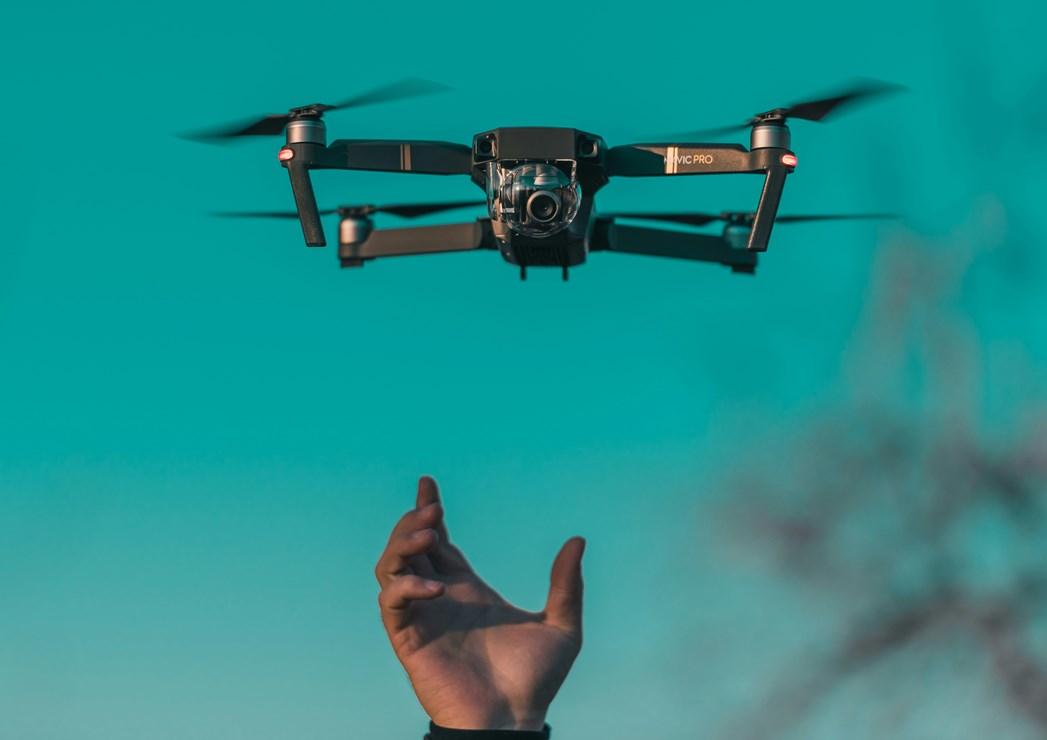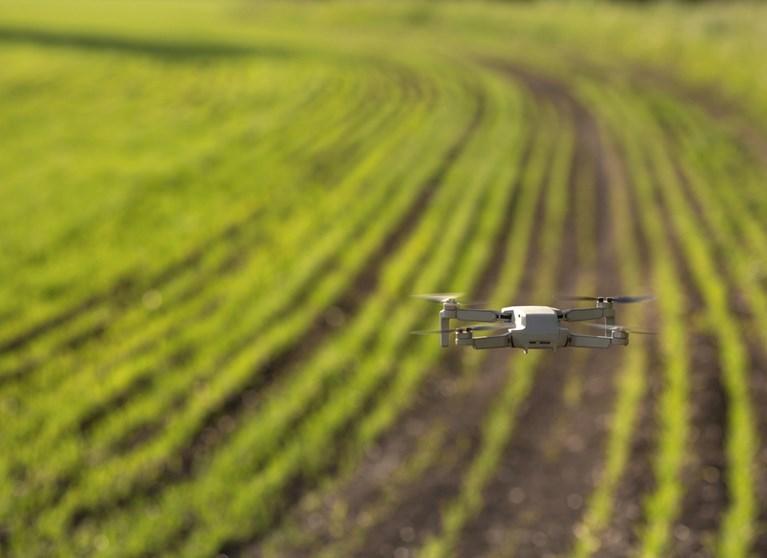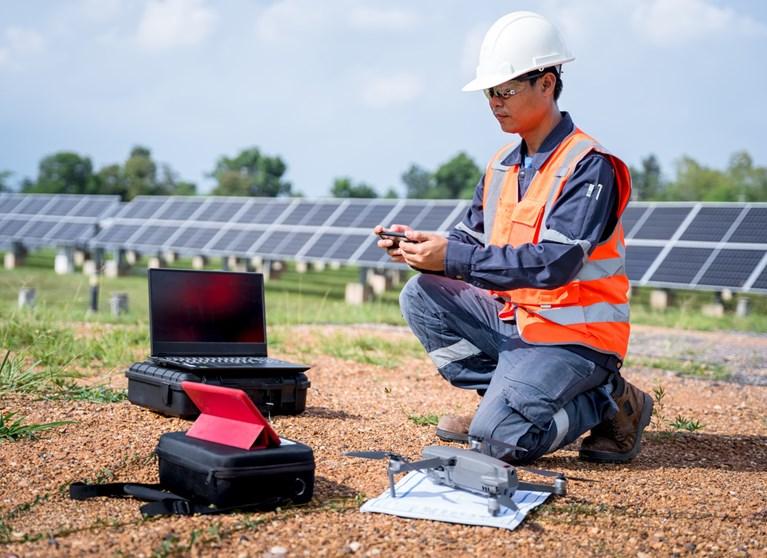A body of experience to support future aviation in the UK.
Egis has demonstrated its capability and commitment to support the future aviation sector, from industry-defining work for the UK CAA, practical implementation of trial concepts with SATE, through to advising government by participation in government committees.
UK CAA - A national standard for electronic conspicuity
In November 2021, the CAA and DfT established the Surveillance Standards Task Force with industry to develop surveillance specifications, including a national, voluntary standard for Electronic Conspicuity (EC)5.
The aim of the EC specification was to enable the delivery of the AMS, integrate new airspace users while reducing the associated risk of mid-air collision in UK airspace and enhancing safety.
Egis was commissioned to explore the options. We structured the work into three phases:
- Phase 1 identified the operational need from future airspace scenarios, the minimum standards which would satisfy those operational needs and the gaps in the UK regulatory framework.
- Phase 2 identified minimum standards to fill the gaps in the UK regulatory framework.
- Phase 3 drafted a roadmap to update the regulatory framework.
Egis delivered a comprehensive set of reports (published online here) that were accepted and supported by the UK Department for Transport (DfT) and CAA. These define future work to deliver a new EC specification within the UK, aligned to the aims of the AMS.
UK CAA - BVLOS air risk study in atypical air environments
In 2022 Egis UK conducted a research paper on behalf of the CAA, with an objective to understand the safety risks associated with operating UAS BVLOS in atypical air environments6, exploring how similar operations have been granted in other parts of the world. The findings outlined the safety risks that an operator might consider when preparing a safety case for this type of BVLOS operation.
This study was part of a wider CAA roadmap that aims to integrate BVLOS operations into unsegregated airspace. The study was used to inform and support the CAA’s Scalable beyond visual line of sight operations plan. The focus of this study was on use cases that were funded as part of the Future Flight Challenge Phase 2 activity and involved global consultation by Egis with numerous national aviation authorities and UAS operators.
Sustainable Aviation Test Environment (SATE)
The Sustainable Aviation Test Environment (SATE) is the UK's first low carbon test location at an operational airport. Based at Kirkwall Airport in Scotland, the project showcases emerging technologies along with real-world potential scenarios. They highlight the environmental, social and economic contribution sustainable aviation can make. Since December 2022, Egis has been working with SATE to explore the feasibility of establishing a trial ‘Airspace Test Environment’ in the Orkney Islands to facilitate a range of UAS trials and operations including BVLOS trials/operations in unsegregated (Class G) airspace. In September 2023 we successfully delivered a comprehensive feasibility study (including detailed options appraisal), concept of operations and draft airspace design to Highlands and Islands Airports Limited (HIAL) and SATE to inform the future direction of the project.
Presentation to Transport Select Committee
In February 2023, Egis joined a panel of industry experts to give evidence to the UK Government Transport Select Committee on eVTOL aircraft, their potential and impact on the UK aviation industry and wider society7. We provided evidence on the safety implications from both an aircraft, air traffic management and airports perspective to support future government decision-making on this part of the future aviation industry.
Network Rail – Aerial asset data strategy: use cases & financial assessment
As part of the development of the aerial asset data strategy, Network Rail (NR) Air Operations tasked Egis with understanding and developing a comprehensive set of use cases for aerial assets (principally rotary wing aircraft and UAS) within the railway operational environment. These use cases were underpinned by a financial assessment using NR’s benefits assessment model such that NR could quantify the benefits of their aerial data services. In nearly all cases, we demonstrated how aerial platforms could perform services more efficiently and more safely than conventional ground-based personnel.
Egis engaged with the different NR routes and regions to understand their decision drivers when contracting airborne surveys and other services, alongside their requirements and views. We conducted a benchmark study across other railway network operators, infrastructure operators and airborne survey providers, and prepared a cost-benefit analysis to quantify the net client benefit.
This information helped to inform Air Operation's strategy in terms of services provided, pricing and operational model, as well as inform their marketing communication within NR.
“Future aviation insurance“- Position Paper
Egis partnered with a global insurance broker specialising in aviation insurance to understand whether the current aviation insurance market is fit for purpose for the emerging needs of the future aviation sector and specifically those technologies and platforms associated with the Future Flight Challenge.
This work brings together the insurance providers and the future aviation industry to discuss and identify the key challenges associated with obtaining commercially viable insurance solutions to ensure that the growth of the future aviation sector is not constrained by an improperly functioning insurance market. The study will culminate in a position paper delivered to the UK Government identifying the key challenges and opportunities for government intervention to address any market shortfalls.
Future Flight Challenge - First-of-a-kind safety framework8
The output of this ground-breaking project was an initial safety framework and a series of recommendations addressing all aspects of the UK’s future aviation system. This study covered key safety issues across the full breadth of the future aviation system, not just one part of it. The framework wouldn’t have been possible without a detailed understanding of the aviation industry and the safety challenges associated with future developments, as well as detailed technical and operational knowledge. The support of our cross-industry working group was another essential ingredient in our success.
From delivering mail or urgent medical supplies in remote areas to surveying infrastructure or animal and plant life, the number of UAS use cases seen in the UK are expanding and being proven daily.
But the next stage of UAS evolution – BVLOS - requires development of our airspace and the regulations that govern it to enable wider integration and the development of further concepts, potentially including AAM and UAM concepts9.
Egis is proud to continue to support the on-going innovations and developments by regulators, governments, academia and industry in the advancement of UAS, BVLOS and airspace concepts, design and regulation.
Sources:
1 https://www.trade.gov/country-commercial-guides/united-kingdom-aerospace-and-defense
2 https://publicapps.caa.co.uk/docs/33/CAP%201711%20ed2%20Airspace%20Modernisation%20Strategy%20Part%201%20(24%20Jan).pdf
3 Unmanned Aircraft System Operations in UK Airspace - Guidance (caa.co.uk)
4 The UK CAA are currently drafting an Operational Capability Roadmap of the key implementation steps for Specific Category BVLOS between now & 2030.
5 CAA - EC
6 See CAP2530
7 https://committees.parliament.uk/event/17346/formal-meeting-oral-evidence-session/
8 Future Flight: A First-of-a-Kind Safety Framework (egis-group.com)
9 https://www.egis-group.com/all-insights/white-paper-skycities-skyways-skytaxis-dream-or-destiny








